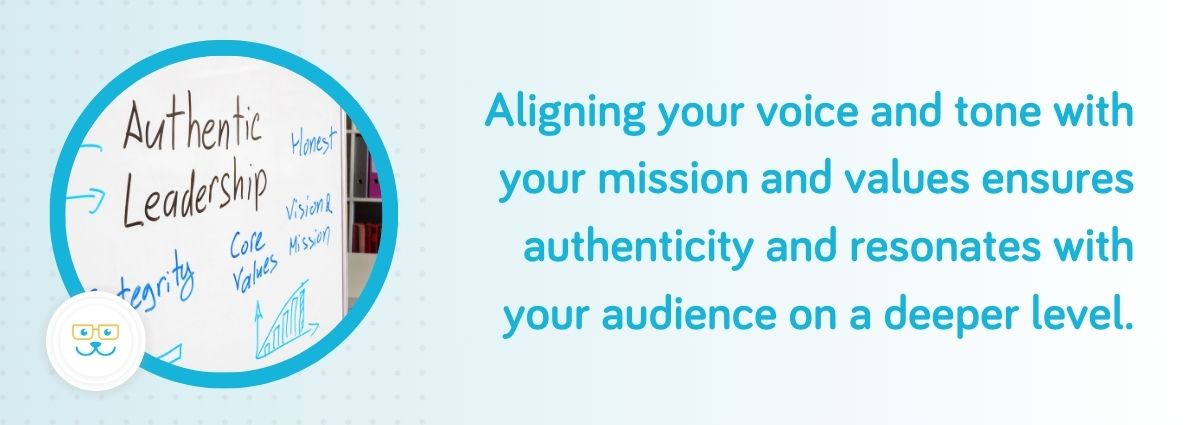Your Voice Matters: The Keys to Finding Your Practice’s Unique Voice & Tone
As a veterinary practice owner or marketing manager, you already know just how important effective communication is in connecting with clients and creating the best clinical outcomes. As today’s veterinary client has continued to evolve, more and more practice owners are placing a greater emphasis on their communication efforts and how they speak to clients and their community.
But in a market that is becoming inundated with this renewed vigor for messaging and communication, how do you ensure that your practice stands out? The answer lies in your brand's voice and tone. In this guide, we'll outline what exactly these terms mean and why they matter, and provide actionable tips for discovering your practice's unique voice and tone. Let's get started.
What Are Voice and Tone?
Before we dive in, let’s clarify what we mean by "voice" and "tone." Your practice’s voice is its distinct personality and style, while tone refers to how that personality is expressed in different situations.

Think of your voice as the essence of your brand, while tone adapts depending on the context – whether it’s a friendly social media post or a professional email:
- Voice: This refers to the consistent style and personality of your communication. It reflects your brand's identity and values. A voice can be formal, casual, friendly, authoritative, or any other quality that aligns with your brand's character.
- Tone: Tone is the way your voice adapts to different situations or audiences. It can change depending on the context, such as being empathetic in customer service interactions or humorous in social media posts. Tone adds nuance and emotional resonance to your message.
Your voice and tone will essentially be the heart and soul of the content you create to represent your practice. Whether it’s social media posts, client emails, website copy, in-clinic signage, video scripts, or search ads, your voice and tone will directly influence the language you use and the way you communicate with existing and prospective clients, as well as the wider pet owner community.
Why Do They Matter?
Your practice’s voice and tone play an important role in shaping how your clients and the local community perceive you, so it’s crucial that they accurately reflect your practice’s personality, values, and professionalism. Developing brand voice guidelines provides a roadmap for all your communication efforts, ensuring consistency across various channels and touchpoints.
Personalized voice and tone in your social media posts, marketing materials, and client communications is one of the best ways to showcase what values and beliefs define your practice. Additionally, the consistency that comes from having an established and documented voice and tone builds trust and loyalty among clients, helping to foster a strong connection between your practice and pet owners.
Now that we’ve covered what voice and tone are and why they’re important for veterinary practices, let's dive into our top tips for how you can find and refine your practice’s unique voice and tone.
6 Tips for Finding Your Practice’s Unique Voice & Tone
1. Reflect On Your Practice’s Mission Statement & Values
Your mission statement and values are the core of your practice’s identity, so they should be the first elements you look at when developing or revising your practice’s voice and tone.

You can start by asking yourself a few questions:
- What values do you want to embody?
- How do you want your clients and staff to perceive your practice?
- What key words or phrases from your mission statement can be used across channels to represent your practice?
- How can your voice and tone help achieve the goal of your mission statement?
Aligning your voice and tone with your mission and values ensures authenticity and resonates with your audience on a deeper level.
2. Think About How to Best Relate to Your Target Audience and Client Personas
Your target audience and ideal customer personas should be guiding everything you do relating to marketing and communications, and creating or refining your practice’s voice is no exception.
When developing your voice and tone, consider the demographics, preferences, and pain points of your existing clients as well as those of clients you’d like to work with in the future. How can your voice and tone address their needs and concerns? Are there certain ways of speaking or approaches (like humor) that can help you better relate to the audience you want to engage?
Whether it’s empathy and reassurance for anxious pet parents or a sense of authority and expertise for seasoned pet owners, tailor your communication style to resonate with your target audience.
3. Audit Your Existing Content and Client Communications
Taking a look back at the content you’ve created over the years can be an incredibly helpful exercise when determining what type of language best suits your practice.
Finding out what type of voice and language your audience already resonates with can take a lot of the guesswork out of crafting your practice’s perfect voice. Is your top-performing social media post from last year a beautiful and poetic ode to vet techs? Did a funny video of your office staff using slang and pop culture references end up going viral? Use these insights about what people already like about your practice’s personality to develop a cohesive and consistent voice.
But don’t just look at top-performing content and stop there. Looking at the content and client communications that didn’t perform as well can be equally as beneficial. If you had a client email that had poor open rates or resulted in a lot of unsubscribes, try taking a deep dive into what elements you think contributed to that performance and which of them could be altered in your refreshed voice and tone documentation. Ask yourself difficult questions about why your audience may not have enjoyed this communication. For example, did you try sending a 600-word email on the importance of vaccines that read like a book report to your Gen Z clients and got less than stellar results? Analyzing communication efforts can give insights that can help shape your voice and tone. You can be informative, but not boring or long-winded in the same breath.
4. Look to Other Brands or Public Figures You Like for Inspiration
While the final product of your practice’s voice and tone should be unique and completely personalized to your clinic, that doesn’t mean you can’t look elsewhere for inspiration during the creation process!
Draw inspiration from brands or public figures that resonate with you. Ask yourself, “What aspects of their voice and tone appeal to you?” Whether it’s the warmth and approachability of a favorite brand or the professionalism and expertise of a respected figure, analyze what makes their communication effective. It’s not an uncommon practice for marketing agencies who specialize in brand voice and development to ask clients in the research stage if there’s a celebrity or television character that embodies their values or represents what they want their voice to sound like. This practice can help you pinpoint certain aspects of voice that you value the most and give some real-life examples of speech and behavior to utilize in your practice’s voice.
Adapt and incorporate elements into your practice’s voice and tone, while ensuring authenticity and relevance to your audience.

5. Determine What Your Practice Does and Doesn’t Do
Figuring out what you do and don’t want your brand voice to sound like or represent can really help you narrow your focus and craft a voice and messaging strategy that truly reflects who you and your practice are. To nail down your voice and tone do’s and don’ts, you can start by creating a few definitive statements that will guide your choices. A few examples of what these statements can potentially look like include:
- Our practice is friendly and approachable but is not overly casual or familiar.
- Our practice is authoritative and well-informed but is not pretentious.
- Our practice is fun and humorous but is not snarky or sarcastic.
- Our practice is professional and refined but doesn't use inaccessible language or jargon.
6. Finalize and Document!
Once you’ve honed your practice’s voice and tone, document your brand voice guidelines. Outline key elements such as tone attributes, preferred language, and communication style. This document serves as a reference point for all your marketing efforts, ensuring that everyone involved in creating content – from social media posts to client emails – stays aligned with your practice’s identity.
Want to transform your marketing efforts and have your practice's voice heard? Book a demo with our team of experts today!

